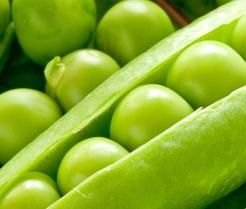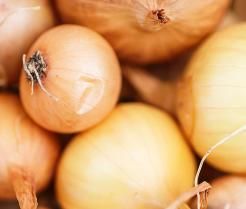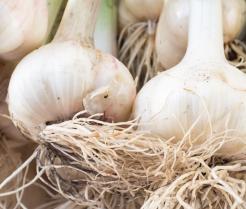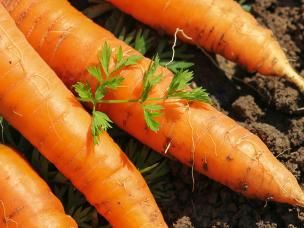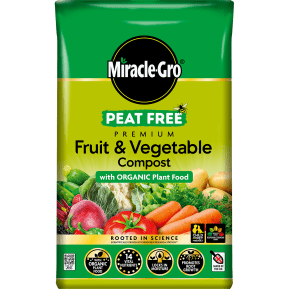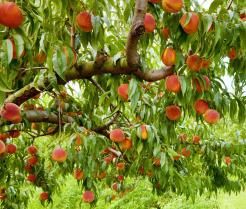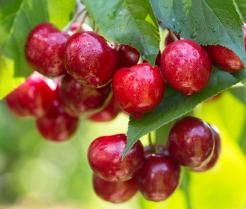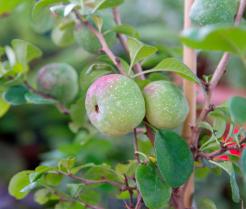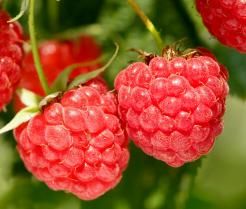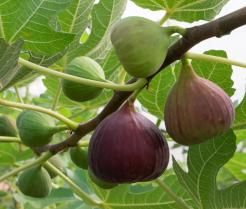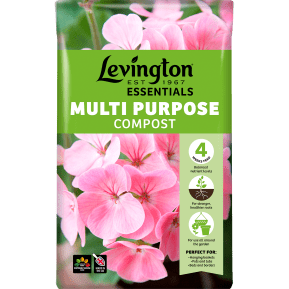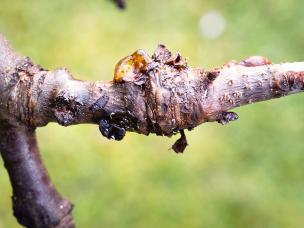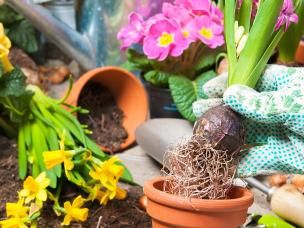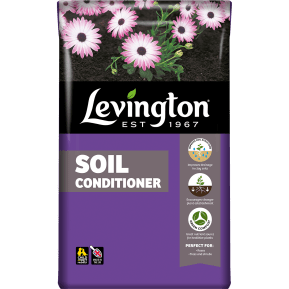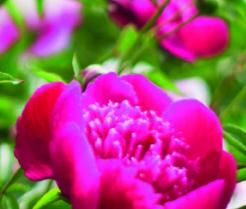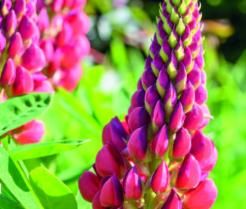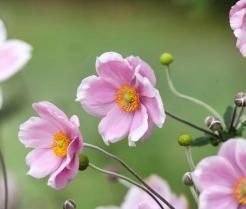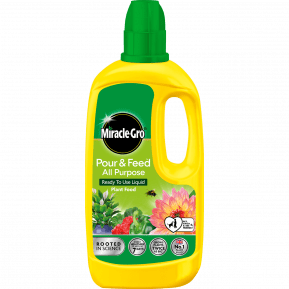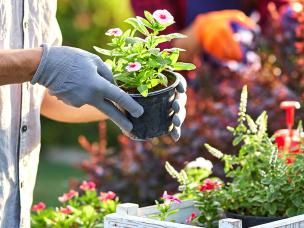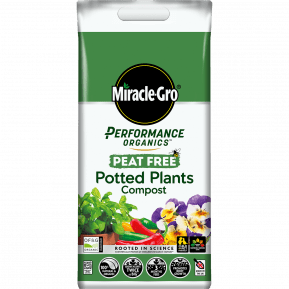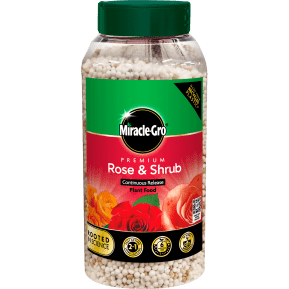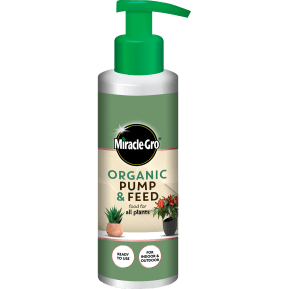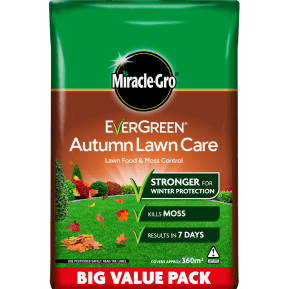November Gardening: Your Monthly Garden Guide
As autumn comes to an end, the last of the leaves are falling from the trees and the days are becoming wetter and noticeably colder. It’s a quieter time of year in the garden, and a great opportunity to reflect on what has worked well, and what hasn’t, and to start planning for the next year. If you find yourself wondering what plants grow in November, it’s a good time to turn your gaze inside and freshen up your houseplants, bringing some of that garden colour into your home.
What to plant in November and other November gardening tips
November is a time of year when many of us step inside and have perhaps a little more time to enjoy our homegrown efforts. With vegetable patches providing a bountiful harvest last month, you’ll likely still be enjoying those warming soups, roasted root vegetable cobblers, and apple crumbles, all made with ingredients from your own garden. There’s still plenty of gardening to do in November, though. Whether you want to know what can be planted in November or you’re just looking for some more general November gardening tips, choose from the categories below to keep your garden thriving through the winter.
You’ll likely find that your October harvest will continue throughout the month of November, so keep an eye out for ripening fruit and veg. If the harvest has left your garden looking a little bare, then you’ll be relieved to know that there are plenty of options for what to grow in November, including fruit trees. Elsewhere your vegetables will need plenty of maintenance to help them through the winter, and it’s a good time of year to prune your fruit plants.
Vegetables
If you’re looking at the tail end of your autumn harvest, mourning your bare vegetable patches and finding yourself wondering what vegetables grow in November, you’ll be pleased to know that there are a few options. That harvest should continue into November as well, so keep an eye on your patch for veg that’s ready for the kitchen table.
What vegetables to plant in November
The following vegetables will gladly stand a cold spell - in fact, they will emerge from winter with strongly established root systems, raring to go in the spring:
Plant seedlings of the following
If you’re planting new veg, it’s a good time to enrich your soil with a peat-free compost. Use a product specially designed to give vegetables the nutrients they need.
Growing vegetables in November
You’ll be happy to know that November in the vegetable patch is fairly low maintenance. However, there’s still a little preparation needed ahead of any winter weather, so don’t put your tools away just yet.
If you have asparagus in your garden, cut down any yellow foliage to 2-3cm (1inch) above the ground. Artichokes can also be cut back. Cut the stems of globe artichokes and add them to the compost heap, and cut Jerusalem artichokes back to about one foot above the ground. This will help prevent damage from strong winds, but still allow you to find them under any snowfall.
If the harsh weather does set in, it’s a good idea to bend the leaves of cauliflower over the developing heads to protect them from frost.
Once you’ve done that, it’s time to turn your attention to protecting plants from hungry pests. Harvest any remaining roots of beetroot and carrots – otherwise slugs and woodlice will damage these once the soil gets wetter. You should then cover your broccoli, Brussels sprouts, cabbage and kale with netting to keep any hungry birds from getting to them!
What vegetables to harvest in November
Many of the vegetables sown in the spring will have finished cropping by now. Brassicas - such as kale and swede - really come into their own and provide us with an important source of nutrients during the colder months so you may be able to harvest a crop from any of the following:
Fruit
If you’ve been asking yourself, ‘can I plant fruit trees in November?’ then the answer is yes. A wide range of bare-root fruit plants are available to buy in the autumn and winter. These are often stronger specimens than container-grown plants and come in a wider range of varieties. Elsewhere in the garden, there’s plenty of harvesting and maintenance to be done.
What fruit to plant in November
November is the perfect time to plant fruit trees and canes as the soil is still warm, and plants are entering a dormant period. Those that can be planted now include:
These fruit trees and bushes can all be planted in November:
Growing fruit in November
Prepare soil for a new fruit tree by digging a square hole and removing all perennial weeds (the roots will spread out better in a square hole than a round one). Drive a stake vertically into the ground from the bottom of the hole and plant the tree about close to the stake, loosely attaching it to the top of the stake. Fill the hole back in with a mixture of soil and compost, and firm the soil around the base of the tree. Make sure to plant any grafting point of the tree above the soil (the knobbly bit a few inches above the root).
The same soil preparation process can be followed for the fruit bushes below, although there is no need to stake them:
Growing fruit in November
Pruning the following fruit trees will encourage new growth into next spring. Remove dead wood, and congested and rubbing branches to promote good air flow through the plants.
Once you’ve got on top of your pruning, you should mulch all of your fruit plants with a suitable peat-free compost or bark to help protect them over the winter months. Alternatively, you can use something like a combination of decorative bark and pine.
While you’re doing that, check the fruit trees for signs of bacterial canker. Foliage will have fallen from the tree as expected in November, making it easier to spot the symptoms of this devastating disease. Look for dark, sunken and sometimes weeping patches of bark on tree stems and branches. Treat it by removing the wound and all surrounding tissue.
Finally, add a barrier to your raspberries to prevent them from spreading and popping up where they aren’t always wanted. Burying a thin but rigid barrier about 2.5cm (1 inch) deep along the edge of the raspberry patch will help to stop them spreading.
What fruit to harvest in November
The last of the fruit should be harvested now, before any heavy frosts. You may manage to get a final harvest out of the following:
- Apples
- Bullace plums
- Grapes
- Pears
- Quince
Recommendation: Apples and pears can both be stored well if wrapped individually in newspaper and kept in a cool dark place. Check them regularly for signs of decay, as diseases can spready quickly – remove any afflicted fruits.
We tend to think of the winter months as a quiet time in the garden when it comes to new life, but November is actually ideal for planting a wide range of plants, shrubs, bulbs and roses. It’s also a good time of year to divide any overcrowding plants, replenish the compost in containers, and bring inside any of your more fragile flowers.
Plants and shrubs
When choosing what plants to plant in November, perennials and shrubs are best placed to survive the winter and put down strong roots for spring and summer. November is also a great opportunity to prune and divide your plants, making sure that they’re healthy and not overcrowding each other.
What plants and shrubs to plant in November
November is the perfect time to plant new perennials and shrubs. Many plants will be entering a period of dormancy over the winter, so can withstand the disturbance and do not require as much maintenance as those planted during hotter and drier weather.
There are many perennials and shrubs which can be planted straight into the garden at this time of year:
- Cotinus (Smoke bush)
- Cornus (dogwood)
- Garrya elliptica (silk tassel)
- Hamamelis (witch hazel)
- Forsythia 'Spectabilis'
- Thuja plicate
- Viburnum tinus
Before planting any of the above, prepare the ground by loosening the soil and adding organic matter, such as a peat-free compost. Water the plants about an hour before planting them, and dig a hole to the depth of the roots, and about three times as wide. Place the plant in the hole and refill it with a soil compost mix, gently firming it to ensure good contact between the roots and the earth. Water your plant well and add a mulch to help retain moisture while it establishes.
Growing plants and shrubs in November
The following trees and shrubs can be pruned in November. Remove any damaged or dead branches – or any that are crossing – but leave the younger shoots.
- Berberis
- Cistus
- Delphinium
- Lupins
- Peonies
Dividing your shrubs will help prevent overcrowding and keep the plant healthy – and November is the ideal time to do this. Avoid doing it on a frosty day, as you may end up damaging the plants when you divide them. Take a garden fork, and use a levering action to gently separate the following:
- Aubretia
- Crocosomia
- Euphorbia
- Geraniums
- Hostas
- Pulmonaria
Other tasks to undertake before the cold winter months really set in include mulching borders to improve the soil. This helps to conserve moisture for plants and provides a helpful source of nutrients. Add at least 5cm (2 inches) to the soil surface, leaving a gap around stems to allow air to circulate around the plant.
If you have climbing plants, provide them with support to help them grow – you can even make this into a feature of your garden by training them into an archway, for example. Finally, check your plants for pests and diseases, and treat them by removing affected plant material to help your plants out come spring.
Flowers and bulbs
When it comes to deciding what flowers to plant in November, it’s an ideal time of year to get a variety of bulbs in the ground. As the weather gets increasingly cold, you should also consider bringing some of your less hardy flowers indoors to brighten up the home.
What flowers to plant in November
As long as the ground isn’t frozen, November is an ideal time to plant the following bulbs:
- Alliums
- Anemones
- Bluebells
- Fritillaria
- Hyacinths
- Irises
- Spring-flowering crocus
- Snowdrops
- Tulips
These will produce an early show of colour to look forward to next year. The bulbs can be planted in the ground, in pots, or a mixture of both. Consider whether a variety of colours will be most eye-catching for your garden, or whether a flush of single colour would strike a stunning display.
Make sure you check each bulb for mould before planting, as it can spread to other bulbs. You should also consider using a peat-free fibre enriched compost, as it will encourage fast growth during the early life of your flowers. Finally, consider feeding them once a week with a naturally derived plant feed.
Plant seedlings of the following
Flower and bulb maintenance in November
When it comes to flower maintenance in November, it’s the season to bring your plants inside – either because they’ve come to the end of their flowering, or to protect them over winter. The following plants are all sensitive to a hard frost, so make sure you bring them inside:
- Cannas
- Dahlias
- Fuchsias
- Geraniums
A late autumn display of flowers brought indoors can make a house feel like a home. The following flowers can be cut in November and brought inside for vase displays:
- Alstroemerias - typically orange, pink, red, white, and yellow flowers
- Amaryllis - typically pink, red, and white flowers
- Chrysanthemums - typically orange, pink, red, white, and yellow flowers
- Hesperanthas - typically pink, red, and white flowers
- Nerines - typically pink, red, and white flowers
Back out in the flower beds, make sure you lift dahlia tubers after the first frost and store them in dry compost in a cool but frost-proof place. It’s also time to clear your sweet peas, but save some seeds first so that you can sow them next year – store them in an envelope in a dry place.
Finally, it’s a good time of year to replenish compost in containers where bedding plants and bulbs were planted earlier in the year. This will provide fresh nutrients to incoming plants and ensure that pests and diseases are disturbed – just make sure that you use a peat-free compost.
Roses
With autumn giving way to winter and many of the year’s flowers shedding their final petals, you’ll likely find yourself looking ahead to next year and thinking about what spring colours you’d like to see in your garden. So, can you plant roses in November? Absolutely. Read on for guidance on which roses to plant, alongside how to look after your roses in November.
What roses can you plant in November?
November is an ideal time to plant roses as long as the ground is not completely frozen. If we’re having a particularly mild autumn, you may find that the earth is workable and warm, making it easy for you to give them the best possible chance to get established. There should be a wide range of varieties available now as bare-root plants, and they are generally cheaper than container-grown roses.
There are several main types of rose. Pick a type that suits the space available in your garden:
- Miniature and patio
- Bush roses (this includes hybrid tea and floribunda roses)
- Shrub roses
- Climbing
- Rambling
- Ground cover
- Standard
When planting your roses, dig a hole that will easily accommodate the spread of roots, and gently place your rose bushes in the hole. Firm down the soil with your heel, careful to ensure there are no gaps, and add some organic, specially formulated granular rose feed around the base of the plants. Finally, add a thick layer of mulch to the soil, taking care not to overcrowd your plants.
Growing roses in November
Preparing to prune roses over the winter means checking that you have the right equipment. Sharp and clean secateurs are essential, and roses can have very sharp and rigid thorns, so remember to wear thick gloves, goggles, and a long-sleeved top that covers your arms.
Different types of rose have specific pruning needs, depending on the time of year, size and habit of the plant. Check for specific guidance on when and how to prune each type but, as a general rule, you should direct your cuts away from the plant so that water does not accumulate in its crevices, and aim to cut within 5mm (1/4 inch) of a bud.
Mulch your roses using well-rotted manure, a peat-free compost, or wood chip, and consider using a specialised compost that includes nutrients specifically designed for roses. It’s also a good opportunity to tie your roses in to supports. Strong winds in the winter months can damage rose bushes as it loosens roots in the soil, creating excess space for water to enter, which can then freeze and damage the plant.
Plant seedlings of the following
If you’re struggling for plants that can be planted in November, it’s worth considering exploring the world of houseplants. There are many varieties available suitable for different conditions – humid bathrooms, bright kitchens or cool, dry corridors. If you already keep houseplants, November is a good time of year to check them over for diseases and pests and apply a suitable treatment.
What houseplants to plant in November
Houseplants allow us to enjoy gardening whatever the weather is doing outside. There is a huge range of plants that can be grown indoors, and they will thrive given the right conditions. Here we recommend plants that are suited to an environment where the temperature is usually 18°C or warmer.
For rooms with good levels of light:
- Alocasia cuprea
- Caladium (Angel’s wings)
- Ceropegia linearis subsp. woodii (Hearts on a string)
- Chrysalidocarpus lutescens (Areca palm)
- Hippeastrum (Amaryllis)
- Hoya carnosa (Wax flower)
- Phlebodium aureum (Golden polypody)
For rooms with poorer levels of light:
- Adiantum raddianum (Maidenhair fern)
- Philodendron xanadu
- Sansevieria (Snake plant)
Make sure you always check the humidity requirements of your plants. Some need a dry atmosphere, where a hallway or landing might be appropriate. Others, such as ferns and orchids, prefer a humid atmosphere such as a bathroom or kitchen.
Finally, if you’re already finding yourself looking forward to the festive period, consider whether there is perhaps a more sustainable alternative to the traditional Christmas tree. There are lots of other options that will look great in your home all year round.
Houseplant maintenance in November
Houseplants have many health benefits. As well as cheering up a room and providing a positive mental focus, some varieties have been scientifically proven to purify the air, removing toxins from the home. Help the plants that are keeping you healthy by watering and feeding them as needed and look out for pests which can attack them. Check for symptoms of damage from:
- Mealybugs - fluffy white lumps on the underside of leaves which can be managed by wiping them off; check daily and repeat if needed.
- Red spider mites - fine webbing on leaves and stems which can be prevented by Improving air circulation around the plant.
- Scale insects - white or brown waxy lumps on the underside of leaves which you can wipe off or tolerate if low in number.
To keep your houseplants strong and able to withstand attacks from pests, you can consider using a naturally derived plant food which is suitable for indoor plants.
When it comes to lawncare, November is really the month when everything starts to wind down for winter, so enjoy having a little extra free time and consider where you might use this in other parts of your garden. You might be able to squeeze in one or two final mows but essentially November lawn care is all about preparing your lawn for the winter.
November lawn care
The big job for this month is to keep your lawn free of debris. Rake fallen leaves up on a regular basis to prevent the spread of pests and disease. Look out for worm castings as well – these can be brushed across the lawn once they’re dry. Try to walk on the grass as little as possible as it can cause damage at this time of year, especially during a hard frost or snow.
You can mow your lawn if it desperately needs it and only if the weather is still mild. Otherwise, put the mower away for the winter! Make sure you clean your tools before they go into hibernation so that they don’t accumulate rust.
Lawn treatment in November
There’s very little to do this month in the way of lawn treatment but if you didn’t manage to feed your lawn last month, make sure to do so before winter sets in. Consider using an organic lawn feed specifically formulated for autumn (such as Miracle-Gro® EverGreen® Autumn Lawn Care) as this will help to protect your grass through the winter, and it will be the last opportunity to do so.


